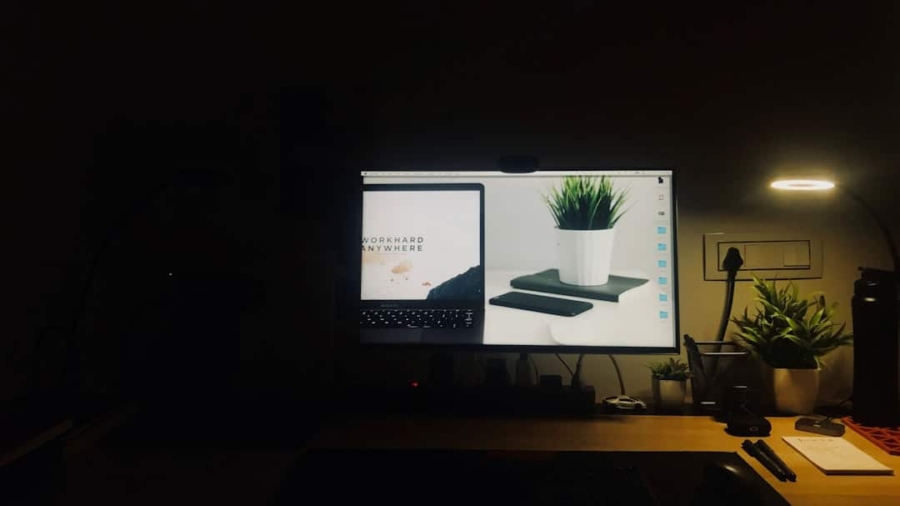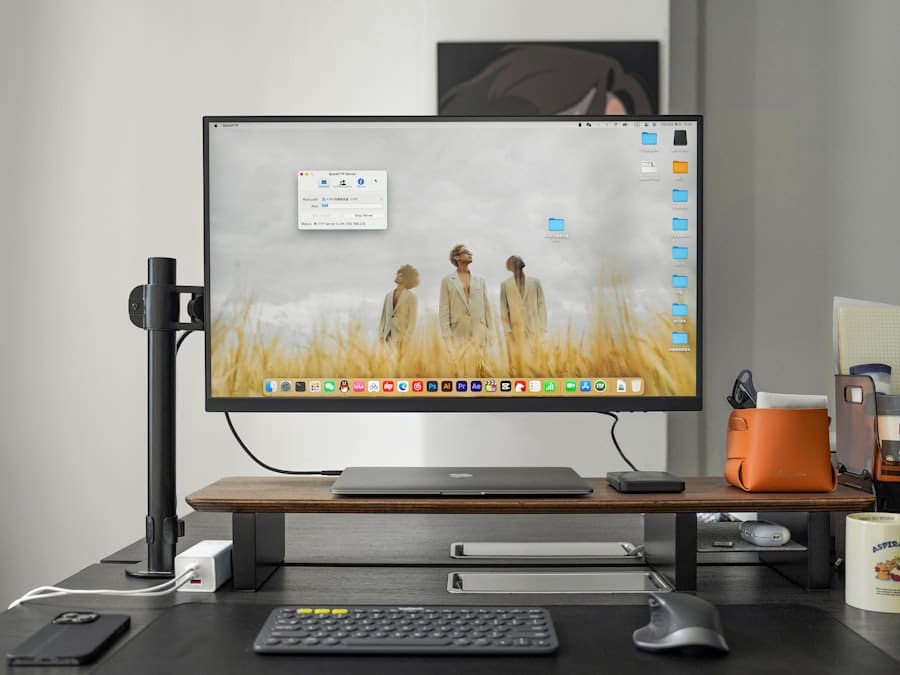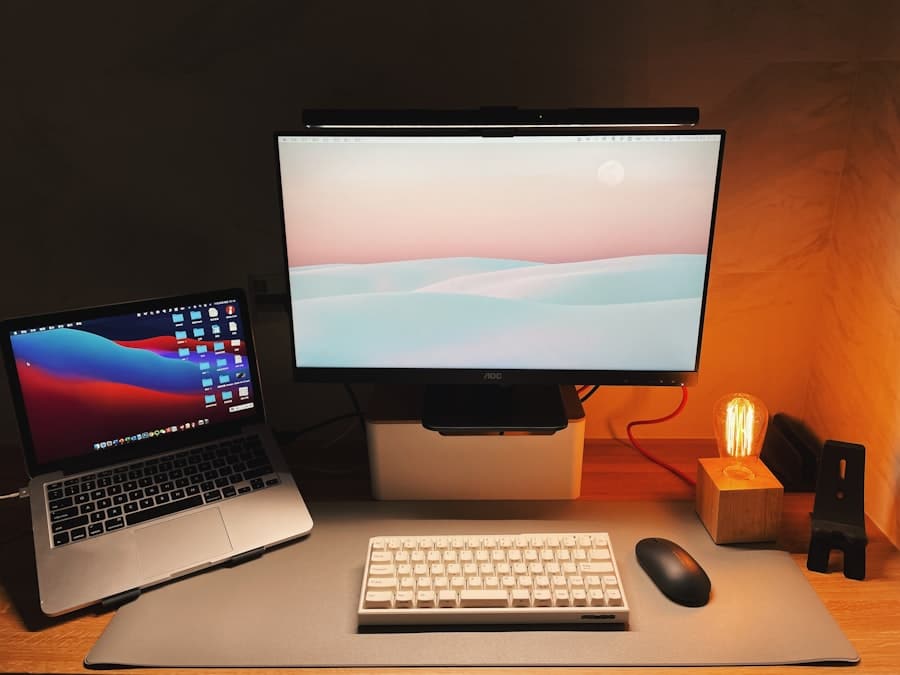A cluttered desktop can significantly hinder productivity and focus, creating an environment that is not conducive to effective work. When a computer desktop is filled with numerous icons, files, and folders, it can lead to cognitive overload. This phenomenon occurs when the brain is bombarded with too much information at once, making it difficult to concentrate on any single task.
Research has shown that visual clutter can distract individuals, leading to increased stress levels and decreased efficiency. The constant visual stimuli from a disorganized desktop can divert attention away from important tasks, resulting in a fragmented work experience. Moreover, the psychological effects of a cluttered desktop extend beyond mere distraction.
A chaotic digital workspace can evoke feelings of anxiety and overwhelm, as users may feel pressured to manage the disorder. This emotional response can create a vicious cycle where the clutter leads to procrastination, further exacerbating the disorganization. In contrast, a clean and organized desktop fosters a sense of control and clarity, allowing individuals to focus on their work without unnecessary distractions.
By understanding the detrimental effects of a cluttered desktop, one can appreciate the importance of maintaining an organized digital workspace.
Key Takeaways
- A cluttered desktop can negatively impact focus and productivity
- Assess your current desktop state to understand the extent of clutter
- Create a system for organizing files and folders to maintain a clean desktop
- Utilize desktop organization tools and apps to streamline the process
- Establish regular maintenance and clean-up habits to prevent clutter buildup
Assessing the Current State of Your Desktop
Before embarking on a journey toward a more organized desktop, it is essential to assess its current state. This evaluation involves taking a close look at the existing files, folders, and applications that occupy the screen. Begin by categorizing items based on their relevance and frequency of use.
For instance, files that are accessed daily should be easily accessible, while those that are rarely used can be archived or moved to secondary storage. This initial assessment provides valuable insights into what is truly necessary and what can be discarded or relocated. Additionally, consider the visual layout of your desktop.
Are there icons that are redundant or outdated? Are there applications that you no longer use? Taking stock of these elements allows for a more informed approach to organization.
It may also be helpful to note any patterns in your usage habits. For example, if certain files are frequently used together, they may benefit from being grouped into a dedicated folder. By thoroughly assessing the current state of your desktop, you lay the groundwork for a more streamlined and efficient digital workspace.
Creating a System for Organizing Files and Folders
Once you have assessed your desktop’s current state, the next step is to create a systematic approach to organizing files and folders. A well-structured organization system not only enhances accessibility but also promotes efficiency in locating documents when needed. Start by establishing broad categories that reflect your work or personal life.
For instance, you might create main folders for projects, personal documents, and reference materials.
Consistency is key when creating an organization system.
Choose a naming convention for files and folders that is intuitive and easy to remember. For example, using dates in the format YYYY-MM-DD can help keep files sorted chronologically. Additionally, consider incorporating tags or keywords in file names to facilitate easier searching later on.
This structured approach not only aids in immediate retrieval but also helps maintain order over time as new files are added. By investing time in creating an effective organization system, you set yourself up for long-term success in managing your digital workspace.
Utilizing Desktop Organization Tools and Apps
In today’s digital age, numerous tools and applications are available to assist with desktop organization.
One popular category of tools includes file management applications that allow users to categorize and tag files efficiently.
Programs like Hazel for macOS or File Juggler for Windows automate file organization based on user-defined rules, ensuring that files are sorted into appropriate folders without manual intervention. Additionally, cloud storage solutions such as Google Drive or Dropbox offer not only storage but also organizational features that facilitate collaboration and access across devices. These platforms allow users to create shared folders for team projects while maintaining individual organization systems within their accounts.
Furthermore, desktop customization tools like Fences or Nimi Places enable users to group icons into designated areas on their desktops, reducing visual clutter while keeping frequently used applications easily accessible. By leveraging these tools and apps, individuals can enhance their desktop organization efforts significantly.
Establishing Regular Maintenance and Clean-Up Habits
Creating an organized desktop is not a one-time task; it requires ongoing maintenance and clean-up habits to ensure that order is maintained over time. Establishing a routine for regular clean-up can prevent clutter from accumulating again. Consider setting aside time each week or month specifically dedicated to reviewing your desktop and organizing files as needed.
During this time, assess which files are still relevant and which can be deleted or archived. In addition to scheduled clean-ups, adopting daily habits can contribute to long-term organization success. For instance, make it a practice to save new files directly into their designated folders rather than allowing them to accumulate on the desktop.
Similarly, take a moment at the end of each workday to tidy up your digital workspace by closing unnecessary applications and organizing any new files created during the day. By integrating these maintenance habits into your routine, you can cultivate an organized desktop that supports productivity and focus.
Implementing a Minimalist Approach to Desktop Design
A minimalist approach to desktop design emphasizes simplicity and functionality over excess. By reducing visual clutter and focusing on essential elements, individuals can create a more serene digital workspace that promotes concentration. Start by evaluating which icons and applications are truly necessary on your desktop.
Aim to keep only those items that you use regularly or that serve a specific purpose in your workflow. Incorporating minimalist design principles also involves choosing a clean background image that does not distract from the task at hand. Opt for solid colors or subtle patterns that provide visual interest without overwhelming the senses.
Additionally, consider using widgets or shortcuts sparingly; while they can enhance functionality, too many can contribute to clutter. By embracing minimalism in your desktop design, you create an environment that encourages focus and reduces distractions.
Utilizing Virtual Desktops and Multiple Screens
For those who require extensive multitasking capabilities, utilizing virtual desktops or multiple screens can greatly enhance productivity and organization. Virtual desktops allow users to create separate workspaces for different tasks or projects without cluttering a single screen with numerous windows and applications. For instance, one virtual desktop could be dedicated to work-related tasks while another could be reserved for personal projects or leisure activities.
Similarly, multiple screens provide an expansive workspace that enables users to spread out their applications and documents effectively. This setup allows for easy access to various resources without the need for constant window switching. For example, one screen could display a document being edited while another shows research materials or communication tools like email or chat applications.
By leveraging virtual desktops or multiple screens, individuals can create a more organized and efficient workflow tailored to their specific needs.
Seeking Professional Assistance if Needed
While many individuals can successfully organize their desktops through self-directed efforts, some may find it beneficial to seek professional assistance. Professional organizers specialize in creating systems tailored to individual needs and preferences, offering expertise in decluttering both physical and digital spaces. They can provide personalized strategies for managing files and folders effectively while also addressing any underlying habits contributing to disorganization.
Additionally, tech support professionals can assist with software solutions that enhance desktop organization. They can recommend specific tools or applications based on individual workflows and preferences while providing guidance on how to implement them effectively. For those who feel overwhelmed by the prospect of organizing their digital workspace alone, enlisting professional help can provide valuable insights and support in achieving a more organized and productive environment.
By understanding the impact of a cluttered desktop on focus and implementing effective strategies for organization, individuals can create a digital workspace that enhances productivity and reduces stress. Whether through self-assessment, systematic organization methods, or professional assistance, taking proactive steps toward desktop organization is essential in today’s fast-paced digital landscape.
If you’re looking to improve your productivity and focus by decluttering your desktop, you may also be interested in learning how to choose the right laptop for video editing. This article provides valuable tips and insights on selecting the best laptop for your video editing needs. By optimizing your technology tools, you can create a more efficient and streamlined workflow.
FAQs
What is desktop clutter?
Desktop clutter refers to the accumulation of unnecessary or disorganized files, folders, and shortcuts on your computer’s desktop, which can make it difficult to find what you need and can be distracting.
Why is it important to declutter your desktop?
Decluttering your desktop can help improve your focus and productivity by reducing visual distractions and making it easier to find and access the files and applications you need.
How can I declutter my desktop?
To declutter your desktop, you can start by organizing your files into folders, deleting unnecessary shortcuts, and removing any files or applications that you no longer need. You can also use desktop organization tools or software to help keep your desktop tidy.
What are the benefits of a decluttered desktop?
A decluttered desktop can help reduce stress, improve focus and productivity, and make it easier to find and access the files and applications you need. It can also improve the overall organization and efficiency of your computer.
How often should I declutter my desktop?
It’s a good idea to declutter your desktop regularly, such as once a month or whenever it starts to become cluttered again. Regular maintenance can help prevent clutter from building up and keep your desktop organized.



